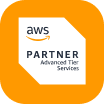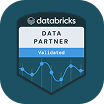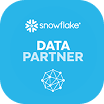The Best Retail Pricing Strategies for 2025 (Using AI and Real-Time Data)
Learn how AI and real-time data power better retail pricing intelligence to power more effective pricing strategies.


It wasn’t that long ago that retail pricing strategies were based on manual processes assessing manufacturing costs, supply, demand, and competitor activity.
In 2025, things are much different: Economic fluctuations and advancements in AI and data technology have changed customer expectations, competitor behavior, and market trends. To survive moving forward, retailers must arm themselves with pricing strategies based on advanced algorithms, real-time data, and comprehensive retail pricing intelligence.
Keep reading to learn how to leverage these technologies and the top 5 most effective retail pricing strategies of 2025.
Factors That Impact Retail Pricing Strategy in 2025
The following three factors will influence pricing the most in 2025.
Fast & Unpredictable Economic Shifts
The economic landscape of 2025 is defined by inflation, ongoing supply chain disruptions, and fluctuating consumer spending power, all of which create an environment of uncertainty for retailers. Sudden shifts in material costs, shipping delays, or economic downturns can drastically impact pricing strategies overnight.
Evolving Customer Expectations
Modern consumers are no longer satisfied with one-size-fits-all pricing strategies. Between inflation and an increasingly convenient, globalized e-commerce market that offers unlimited choices and low-priced items directly from wholesalers, consumers want value, personalization, convenience, transparency, and sustainability.
Consumers expect prices tailored to their shopping habits, preferences, and regional conditions. They want to be rewarded for sticking to a specific brand or product and expect discounts, incentives, and reward points for making repeat purchases. They also want to understand how prices are determined, expect products to be fairly valued, and are willing to pay a premium for ethical, sustainable products.
Increased Competition From a Data-Driven Retail Landscape
Competitors can now optimize prices in near real-time by leveraging tools that precisely monitor fluctuations in demand, inventory levels, and competitor pricing. Access to real-time general market data—such as news, SERP rankings, and customer sentiment from social media—has also enabled retailers to predict and prepare pricing for future market fluctuations.
This ability to adjust prices almost instantly has raised the stakes for retailers, making static or manual pricing strategies obsolete.
How Retail Pricing Strategies Need to Change in 2025
To thrive in 2025, retailers must go beyond traditional pricing methods and prioritize the following.
Embrace Real-Time Data and AI for Agility
Remaining agile by utilizing real-time data collection and AI-powered automation is key to remaining competitive and staying resilient in the face of unpredictable economic shifts.
These tools empower retailers to track precise fluctuations in demand, competitor pricing, supply chain variables, news events, customer trends, and other relevant data to find market trends and react to them instantly. This ensures retailers capture pricing opportunities as they arise.
Prioritize Personalization and Localization
Advanced customer data analytics allows businesses to align prices with individual purchasing habits, shopping behaviors, and preferences. This enables personalized pricing, discounts, and promotional offers, giving customers the advanced personalization they expect.
Localization, enabled by geolocation and regional market data, can further enhance personalization by ensuring pricing reflects regional market dynamics, such as local variations in demand, purchasing power, news, and seasonal trends.
Align Pricing Strategies with Customer-Centric Values
Transparency in how prices are set, fairness in pricing practices, and a commitment to sustainability can go a long way in pleasing customers who crave prices aligned with their values.
Incorporating ethics into your pricing strategies—such as offering fair trade products, carbon-neutral pricing models, or explaining the cost behind ethical labor—can help retailers stand out in a crowded market and foster deeper customer trust and loyalty.
5 Top Pricing Strategies for Retailers in 2025
1. Price Optimization
What It Is
Price optimization uses predictive analytics and machine learning to identify the most profitable price for a product or service based on historical sales data, customer behavior, and market trends. It focuses on finding the perfect balance between profitability and customer satisfaction.
When to Use It
This approach works well for retailers with a broad product catalog, businesses launching new products, or companies operating in competitive markets where pricing consistency is critical. For example, price optimization can be used for seasonal or promotional pricing.
Key Benefits
- Boosts profit margins without sacrificing customer loyalty.
- Reduces guesswork in setting prices by relying on data-driven decisions.
- Enables strategic pricing for product launches or targeted campaigns.
Tools for Implementation
Retailers can implement price optimization through platforms like Pricefx, Revionics, or their own AI-based optimization algorithms. Integration with real-time data platforms and sales analytics is also essential for success.
2. Localized Pricing
What It Is
Localized pricing adjusts prices based on regional factors such as average income, market demand, and competition in specific geographic areas. It ensures that prices are appropriate and competitive for different locations or customer demographics.
When to Use It
This strategy is particularly effective for retailers operating in multiple regions with varied purchasing power. For example, a global retailer might set lower product prices in developing markets than in high-income areas.
Key Benefits
- Improves market penetration by making products more affordable in certain regions.
- Enhances customer satisfaction by addressing local preferences and needs.
- Maximizes profitability by avoiding a one-size-fits-all pricing approach.
Tools for Implementation
Retailers can analyze regional data using geolocation-based pricing software, ERP systems, and data analytics tools like Tableau or Power BI. AI-driven platforms can also help automate price adjustments.
3. Tiered Pricing
What It Is
Tiered pricing involves offering different price points or levels for the same product or service to cater to distinct customer segments. Each tier provides varying features, benefits, or quantities, enabling businesses to serve multiple market segments simultaneously.
When to Use It
This strategy works well for SaaS businesses, subscription-based services, or retailers with a range of customer segments. For example, a subscription-based perfume retailer that sends monthly boxes of perfume samples might offer a small, medium, and large version to accommodate customers with different needs.
Key Benefits
- Expands market reach by appealing to diverse customer segments.
- Increases average revenue per customer by encouraging upgrades to higher tiers.
- Provides flexibility for customers to choose based on their budget and needs.
Tools for Implementation
Tiered pricing can be managed through subscription management platforms (e.g., Chargebee, Stripe) or custom-built pricing models integrated into e-commerce systems. CRM tools can help track customer behavior and preferences to refine tiered pricing strategies.
4. Subscription-Based Pricing
What It Is
Subscription-based pricing involves charging customers a recurring fee, typically monthly or annually, in exchange for access to a product or service. It focuses on fostering long-term customer relationships and providing consistent revenue streams.
When to Use It
This model is ideal for consumables, software, or services that customers need regularly, such as grocery delivery, streaming services, or memberships. For example, a food retailer might offer subscription boxes for curated meal kits.
Key Benefits
- Creates predictable, recurring revenue streams.
- Increases customer loyalty and retention.
- Encourages upselling and cross-selling opportunities.
Tools for Implementation
Businesses can use subscription management platforms like ReCharge, Shopify Subscriptions, or Zuora. AI-driven customer analytics tools powered by real-time customer sentiment data can identify opportunities for subscription upgrades or add-ons.
5. Dynamic Pricing
What It Is
Dynamic pricing involves adjusting prices in real-time based on various factors, such as market demand, competitor pricing, inventory levels, and even the time of day. It leverages real-time data pipelines, AI, and advanced algorithms to analyze data, determine the optimal price for a product at any given moment, and automatically implement that price adjustment.
When to Use It
Dynamic pricing is effective for most retailers and can be implemented online and in-store. However, it’s especially effective for businesses in niches with fluctuating demand and high competition, such as fashion, technology, and everyday consumer goods. For example, online retailers can use dynamic pricing during peak shopping seasons like Black Friday or Cyber Monday to maximize revenue.
Key Benefits
- Maximizes revenue and profitability by capturing high-demand opportunities.
- Helps clear out slow-moving inventory with competitive pricing.
- Provides flexibility to respond quickly to market changes.
Tools for Implementation
Retailers can use AI-powered tools like dynamic pricing engines, pricing intelligence software (e.g., Prisync, Omnia Retail), or custom-built machine learning models integrated with real-time data pipelines.
How to Leverage AI and Real-Time Data for Better Retail Pricing Intelligence
To stay competitive in 2025, retailers must leverage more innovative retail pricing intelligence tools enabled by real-time data, AI, and automation.
Enable Dynamic Pricing With Real-Time Competitor Monitoring
Retailers can use real-time data data streams to track competitors’ pricing changes as they occur. By plugging this data into AI-driven analytic tools and dynamic pricing algorithms, retailers can automatically adjust prices, ensuring offers remain competitive and profitable at all times.
For example, if a competitor launches a flash sale, dynamic pricing tools can instantly lower prices on similar products to retain customer interest while maintaining margins. By eliminating the need for manual updates, these tools save time, reduce human error, and maximize efficiency.
Predict Market Trends and Customer Behavior Before They Happen
With the help of AI-powered data processing and analysis, retailers can quickly analyze real-time data like social media sentiment, breaking news, competitor actions, and customer support tickets to detect early signals of emerging market trends and tweak prices and promotional campaigns accordingly.
For instance, a spike in online chatter about an upcoming product launch or a viral event can inform pricing adjustments ahead of increased demand. Similarly, predictive analytics can identify patterns in customer purchasing behavior, helping retailers prepare for demand spikes or seasonal shifts.
Use Automation to Make Smarter Pricing Decisions Faster
AI-powered automation can clean, process, and generate insights from vast amounts of raw data, and then execute pricing changes based on those insights within a few minutes. This makes automation an incredibly valuable tool, particularly during high-stakes scenarios where speed is critical, like flash sales or inventory surpluses.
For example, if a product is selling out faster than anticipated, automation can immediately adjust prices to balance demand and maximize revenue. By removing the bottlenecks of manual pricing adjustments, automation ensures retailers can stay ahead of price wars and capitalize on market opportunities the instant they happen.
How Nimble Enables Better Pricing Strategies Through Smarter Retail Pricing Intelligence
Nimble’s Online Pipelines offer an easy way for retailers to get the real-time data they need to fuel smarter, more efficient, and more automated pricing strategies. Key features include:
Comprehensive Real-Time Pricing Data for a Full Market Picture
Nimble provides continuously updated data from various relevant sources to ensure you completely understand all the factors affecting your pricing. Data points include:
- Competitor Prices: Current prices, discounts, and promotions.
- Market Demand: Search trends and social sentiment insights.
- Historical Pricing Trends: Seasonal or temporal variations.
- Customer Behavior: Reviews, ratings, and purchasing patterns.
- Regional Variations: Geographic pricing differences.
Automated Data Processing and Cleaning to Expedite Time-to-Insights
Nimble’s AI-powered automated parsing and cleaning instantly transforms raw data into actionable insights without manual intervention.
Advanced Entity Matching Matches SKUs Across Sources
Nimble’s AI-driven entity-matching technology can recognize identical products and features across different data sources. This allows retailers and CPG companies to understand how the same products are priced in competing marketplaces.
Effortless Scalability for Fluctuating Business Needs
Nimble’s Online Pipelines makes it easy to add, remove, or adjust:
- Data sources (websites, marketplaces, social media platforms)
- Data parameters or data types (SKUs, product titles, prices, shipping costs, ratings)
- Page types within website sources (product pages, search pages, category pages)
- Website interactions (pagination, clicks, text input)
…Without any complex engineering, making scaling to your changing business needs effortless.
Easy Integration Into Existing Workflow
Nimble offers flexibility in data format delivery and native integration with popular data storage solutions like Databricks, Snowflake, and Microsoft Azure, ensuring a smooth and painless addition to your existing workflow.

Conclusion: Future-Proof Your Pricing Strategy With Better Pricing Intelligence
The retail landscape of 2025 is faster, more competitive, and more technologically driven than ever before—creating new roadblocks as well as new opportunities.
To ensure pricing strategies are future-proofed to handle this new, fast-paced world, retailers must stay adaptable and implement agile pricing strategies. By combining technology like real-time data pipelines, AI data analytics, and AI-powered automation, retailers can fuel smarter, faster, and ultimately more profitable pricing models like dynamic pricing and localized pricing.
FAQ
Answers to frequently asked questions













